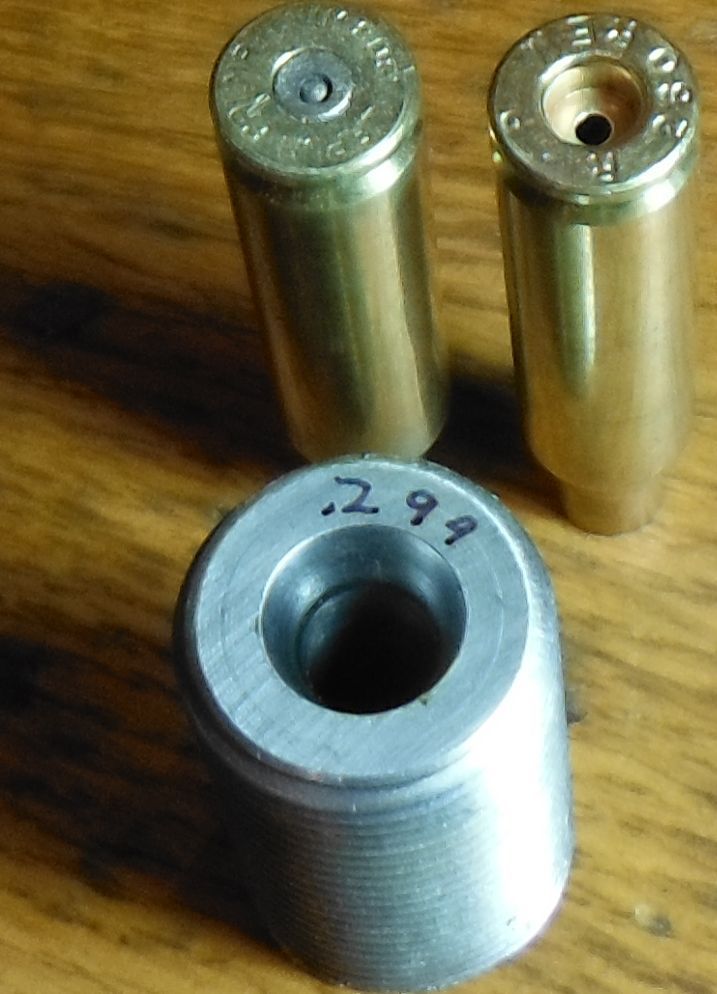Re: Forster FL Sizing Die Factory Honing Question
<div class="ubbcode-block"><div class="ubbcode-header">Originally Posted By: Infinity</div><div class="ubbcode-body">Clark, thanks. I am having trouble deciding if you're last post, or your previous one, addresses service rifle ar-type weapons. </div></div>
Here's the problem you're going to run into having your .308 die honed out (or widened,) you're going to be stuck with a particular brand of brass--in your case, Federal brass.
Different brands of brass have different neck wall thicknesses and even the same brand of brass may exhibit a different thickness on the same case, around different parts of the neck.
When die makers make their dies, they err on the side of caution and make them slightly tighter, thereby gripping the bullet more, rather than less. They do this for 'insurance' purposes. This is to say that they'd rather have a bullet gripped a bit more, than one that is too loose and prone to set back (forcing the bullet back into the case.) This can cause a spike in pressure and that's not a great thing.
Touching on Clark's post, quoting the fellow about neck tension, he/they are correct. There is a plethora of variables affecting how tightly/loosely that bullet is held in the case mouth. Many of those variables we don't have control over, but we can control the opening of the case mouth and we do this through bushings, or honing out the neck portion of a fixed diameter FL/neck sizing die, to match a certain brand of brass, or more precisely, the thickness of that brand's neck walls.
Bushings do matter and I have some Winchester brass that when sized with a .332" bushing, will allow me to easily pull a .308 bullet out of the necks with only my thumb and forefinger. Other Winchester brass that I have, requires a .334" bushing, so that's a big difference.
I have other bushings where, when used, I can barely knock the bullet out with a kinetic puller, even after ten whacks.
The problem with a gas gun is is the massive bolt carrier inside. When they fly forward, they strip off a round from the magazine and that round smashes into the feed ramp, forcing the bullet back into the case. Once that cartridge hits the shoulder stop of the chamber, there might be some inertia acting upon the bullet, forcing it to travel back out a bit.
With little neck tension, or even using brass with thin necks, you'll possibly have a bullet that is more easily pushed back into the case and causing pressure to rise. It might not be a lot and you might not ever notice it, but if you're running at the redline and you happen to be shooting in hot weather, it could create a problem down the road.
The biggest issue for me, at least, is in limiting oneself to one neck wall thickness, so to speak. What if, as in the case of my Winchester brass referenced above, you get a batch of Federal brass that has unusually thin necks? Your honed out die is not going to squeeze those necks down far enough to grip that bullet with 'enough' force, to prevent set back.
In a bolt gun, one can always insert that loose cartridge into the chamber and close the bolt gingerly, but not with a gas gun.
Add to this the fact that Federal brass doesn't have the longest lifespan and you might be over-thinking the situation a bit.
I realize that bushings aren't perfect, but if you have a few of them, you can safely load up varying brands of brass and keep things somewhat more uniform, than you would having a standard (or honed out) die with a fixed opening in the neck area.
Anyhow, if you're going to stick with one brand of brass, go for it, but I might just test out the Forster and see what it's actually doing to the necks that you intend to shoot down the road.
Size a few cases with the die as is and measure the outside diameter. If you know your average neck wall thickness, you can figure things out from there. You'll need a ball mic to measure the walls, however.
Chris


